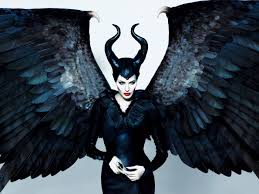Why did it take me so long to write about the 2014 Toronto Inside Out LGBT Film Festival?
I don’t know except that the whole experience was so uniformly pleasant that it was a little overwhelming. That’s great…and it doesn’t happen very often.

I was in Toronto for the first four days of the festival. It was a long weekend filled with seeing terrific films, making new friends, and going to lots of parties.
Saga Becker (Something Must Break) and I became fast friends from the time we met at the airport. She is wonderful in her film debut playing a transgender character riding the emotional rollercoaster of young love. She is smart and funny and beautiful, and I wondered from time to time if hanging out with me might have cramped her style since I’m a bit of a mother figure for my students and other people Saga’s age (she’s within two years of my own son). I think we’ll see more from her…what a talent.

Films I particularly enjoyed include the opening night film The Way He Looks. It is tender, sweet, charming, and I highly recommend that you seek out this Brazilian film about a blind teenager coming of age and seeking independence and love. Some may call this a “safe” film, but that means that it will appeal to a wide audience.
The Normal Heart was previewed at the festival, and you can check this film out now on HBO. A bit stagey at times (the film is an adaptation of Larry Kramer’s Tony Award-winning play), Mark Ruffalo is excellent (when isn’t he?) as an AIDS activist in the early days of the plague, and Matt Bomer (who was at the festival) is very good in the role of his lover.
The screening of Living in the Overlap, which I co-directed with Cindy Hill, exceeded my expectations. Actually, I try not to have expectations because it’s best just to experience things and see what happens, but it can be hard to tamp down latent hopes. It started with a stroll down the pink carpet (trust me, the carpet underneath my feet is pink!), and meeting Alison Duke (pictured below), a member of the Inside Out Board of Directors who introduced the film and moderated the Q & A.

The response from the audience was overwhelming and affirming. I can’t tell you how many times I heard “Thank you for your film” and “You have told our story” over the next two days. Learning at the end of the festival that Living in the Overlap won the Audience Award for Best Short Film (an award voted on by viewers who fill out ballots) is a huge honor. I’m smiling just writing those words.

I enjoyed seeing the Canadian premiere of Tru Love, a film by Kate Johnston and Shauna MacDonald (who also stars in the film). The film is unexpectedly soft visually – not in terms of literal focus but in terms of its lushness – which is appealing and imbues the film with a tenderness that spills over into the overall emotional tone even when characters face disappointment, complex entanglements, and loss. It’s always good to see older characters find passion and love; this is an underrepresented area in film along with lesbian love stories. Tru Love is clearly a passion project for the filmmakers, one that also resonates with viewers because it won the Audience Award for Best Feature Film at the festival.
I had a blast hanging out with J.C. Calciano (see previous post about his film The 10 Year Plan, which is coming to OUT at the Movies Winston-Salem later this week) at the filmmakers brunch and at a small dinner with festival staff and Judy and Dennis Shephard, who were attending to promote the documentary Matt Shepard is a Friend of Mine. It was at that dinner that I got to know the Festival Executive Director Scott Ferguson better. What a lovely, lovely man.

I can’t overstate the wonderfulness of the festival staff, and Guest Relations Coordinator Lou Pellegrino treated filmmakers like royalty.

Another highlight of the festival was seeing the re-launch of Forbidden Love: The Unashamed Stories of Lesbian Lives, a classic Canadian documentary from 1992 that has been remastered in HD and is now available on DVD from the National Film Board of Canada. The panel after the screening included co-director Lynne Fernie (who had directed me to a good yarn store shortly after I arrived in Toronto) and writer B. Ruby Rich. Wow.

I wish I could have seen all of the films. Some are available for you to see now or soon – the superb documentary The Case Against 8, which screened at RiverRun, is coming up on HBO – but others may be more difficult to find. This serves as a reminder why it’s so important to support your local film festival: to see good films that won’t be available otherwise.
Next up for Living in the Overlap: Frameline38 on May 22 in San Francisco and the Provincetown International Film Festival in Massachusetts on May 18 and 21.
If you are interested in seeing a trailer for the film, check out www.lennieandpearl.com , we post regular updates on the Facebook page, https://www.facebook.com/livingintheoverlap , and you can follow us on Twitter @LITO_themovie .
Also, I’ll keep you posted here occasionally!
Thank you, again, for letting us come into your lives Lennie Gerber and Pearl Berlin. Your powerful story of love matters to a great many people.















